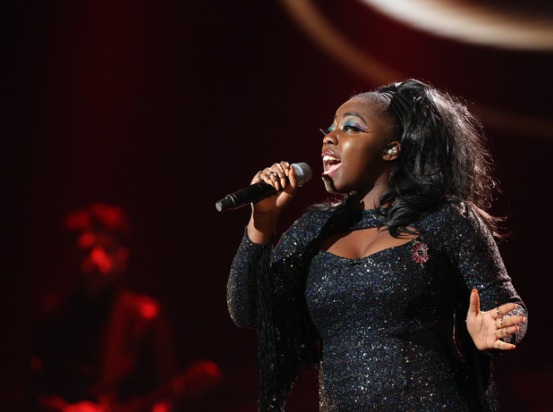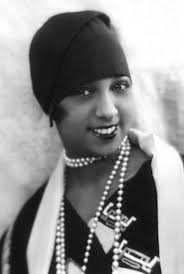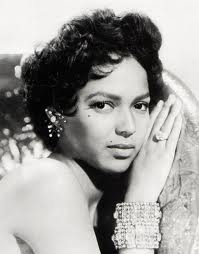I don’t watch X-Factor, or Britain’s Got Talent, or The Voice, or any of these TV talent shows. But such a controversy was caused when X-Factor contestant Hannah Barrett complained of the racist/shadist abuse that she suffered on social media, that it reached even my radar. According to Barrett, Black people were tweeting saying that she was ‘too dark’ to be a pop star.
For those outside of the Black community, this story may seem strange. If there are two areas that Black people have been allowed to thrive in this country, it is in sports and music. Infact many of the biggest pop stars of the last few decades have been Black. But the sad truth is that when it comes to women in entertainment, you can be Black, just not TOO Black.
All of the many successful Black female performers in the music industry, such as Beyonce, Rihanna, Alicia Keyes, Nicki Minaj etc, have something in common besides their Platinum discs – they are all light-skinned. The fact is that women in entertainment – be that music, movies, fashion or TV – are judged first and foremost on their appearance. Regardless of their talent, any woman who wants to succeed in this business must be considered as attractive – an attractiveness defined with very narrow tightly defined parameters. They must be slim, light-skinned, with European features, and long straight hair. If you are a dark-skinned Black woman, or even a fuller figured white woman you can work in these industries, but you will have to play the background. You can be a backing singer, but you can never be the star upfront. You can be a supporting actress, but you can never be a screen goddess.
The many Black actresses who’s success we celebrate – Halle Berry, Thandie Newton, Zoe Saldana, Paula Patton, Naomi Harris etc – all fit within these narrow parameters, and all come in a lighter shade of Black.
I’m not wanting to detract from the undoubted talent of all of these stars, but the sad truth is that they wouldn’t have reached where they are today, were they a few shades darker, or in possession of more African features. And what’s so worrying about this fact, is that little Black girls growing up today, may NEVER see themselves positively represented on screen. This has been the case for as long as we’ve had cinema.
From Josephine Baker in the 1930s, to Lena Horne in the 40s, and Dorothy Dandridge in the 50s, to Pam Grier in the 70s, to Vanessa Williams and Lisa Bonet in the 80s, to Tyra Banks and Halle Berry in the 90s, to Beyonce today, when it comes to our Black beauties, it seems the lighter the better. In this Eurocentric world in which we live in, mixed race is the acceptable face of Blackness. Those sisters who are dark, try in vain to aspire to these European standards by modifying their appearance with hair weaves, colour contacts, and even toxic skin bleaching creams.
Interestingly the same standards don’t seem to apply to men. Black men can be dark and still considered attractive. Consider old favourite Tyson Beckford, or new favourite Idris Elba – their dark complexion seems to enhance their desirability. Whilst the essence of feminine beauty is slim and pale, the essence of virile masculinity is tall and dark.
But it is an oversimplification to simply blame this phenomenon on the racism of white people imposing their narrow Euro-centric perspectives on the rest of us. Remember that Hannah Barrett was complaining of racist comments from fellow Black people.
In music videos dark skinned women are conspicuous by their absence. It has been de-rigueur for some time now that the eye candy in rap promos will be mixed or Latino, and it seems in UK music videos, even lighter sisters can’t get a look-in these days. Notice recent videos from grime artists Wiley and Dizzie Rascal, that depict their idea of a perfect pool party, as them and a few male friends surrounded by a harem of skinny white girls.
By way of defence Wiley and Dizzie have both stated that they are not responsible for the selection of the models in their videos, but for such outspoken and independently-minded artists, I would expect them to take more of a role in how they are being visually represented. (If the video stylists asked them to wear a dress for the shoot, I’m sure they would have had something to say!)
But to me, even worse than the rap videos (who could ever look to Lil Wayne for guidance?) is the fact that the hosts on BET and so many African cable TV channels replicate this trend, having exclusively dark brothers accompanied by mixed or light-skinned sisters in front of the camera. So why are we as a race perpetuating the dissing of our darker skinned sisters? How and why have we inculcated such self-hatred?
It all goes back to the doctrine of white supremacy that was so successfully spread throughout the African diaspora through slavery and colonialism. For centuries white Europeans have drummed into their darker skinned subjects, that Europe was the pinnacle of civilisation, and that the rest of the world were primitive heathens without a culture of any worth. That God was white, Jesus was white, that white women were the epitome of beauty, that Black is ugly, and the closer to white you were, the higher you could rise. A racial hierarchy neatly encapsulated in the catchy phrase ‘If you’re white you’re alright, if you’re brown stick around, but if you’re Black get back.’
Malcolm Gladwell explains the Jamaican plantation experience in his book ‘Outliers’
“whites saw mulattoes – the children of those (mixed) relationships – as potential allies, a buffer between them and the enormous numbers of slaves on the island. Mulatto women were prized as mistresses, and their children, one shade lighter in turn, moved still further up the social and economic ladder. ”
Gladwell further outlines how the victims of this hierarchy of shade absorbed the racist doctrine that still operates to this day.
“Mulattoes rarely worked in the fields. They lived a much easier life of working in the ‘house’. They were the ones most likely to be freed. It’s not surprising then, that the brown-skinned classes of Jamaica came to fetishize their lightness. It was their great advantage. They scrutinized the shade of one another’s skin and played the colour game as ruthlessly in the end as the whites did.”
Sadly today such shadism is not confined to the descendants of slaves. Skin lightening creams are as popular in Asia as they are in Africa and the Caribbean. But in the 21st century isn’t it time we stopped perpetuating it? Please be aware, I am not promoting one shade over another. I am saying we should celebrate Blackness in ALL of its shades, not just the ones that fit in with Eurocentric values. Realise that it’s not possible to be a conscious Black person whilst perpetuating shadism/colourism. We need to re-programme ourselves, to counteract the centuries of white supremacist brain-washing. Let’s not pass on these negative messages to another generation. Let’s stop using racially loaded concepts like ‘good hair/bad hair’. Let’s stop this ‘Team Light-skin vs Team Dark-skin’ foolishness. If you’re buying a doll/action figure or books for Black/Brown children make sure that the heroes/heroines look like they do. Let’s see more music artists including some dark-skinned sisters in their videos. And let’s see a dark skinned sister win X-Factor!
De-programming material
If you’re down for the cause and want to stop the rot, here are some resources you may find useful to share with the children in your life, or less enlightened peers.
Video/film –Beauty Is
Dark Girls
Yellow Fever: TRAILER from Ng’endo Mukii on Vimeo.
 Books Black Beauty by ben arogundade
Books Black Beauty by ben arogundade
Greetings cards – http://personalise.colorblindcards.com/
On-line – visit www.endcolourism.org
Twitter– follow @EndColourism
Dolls Rooti Dolls – http://rootidolls.com/new/







